Table of Contents
Introduction
India is a hub for many herbaceous plant species, which has immense use in the medical field. Turmeric is a very well-known spice used as a dye, flavoring, and it has its importance in the medical field. In India, turmeric is known as “queen spice” because of its sharp flavor and golden yellowish color. The turmeric is scientifically known as Curcuma longa L. It belongs to the Zingiberaceae family. It is a perennial herbal plant with a short stem, oblong leaves, and pyriform rhizomes.
The rhizomes or roots are mostly branched, and they appear in brownish yellow color. From ancient times, turmeric is used in marriages for the Haldi ceremony because it provided luster and glow to the skin, helping maintain its vitality. The turmeric benefits are not limited to keeping healthy skin, but also it has other important medicinal properties like antioxidant, anticancer, antimicrobial, etc.
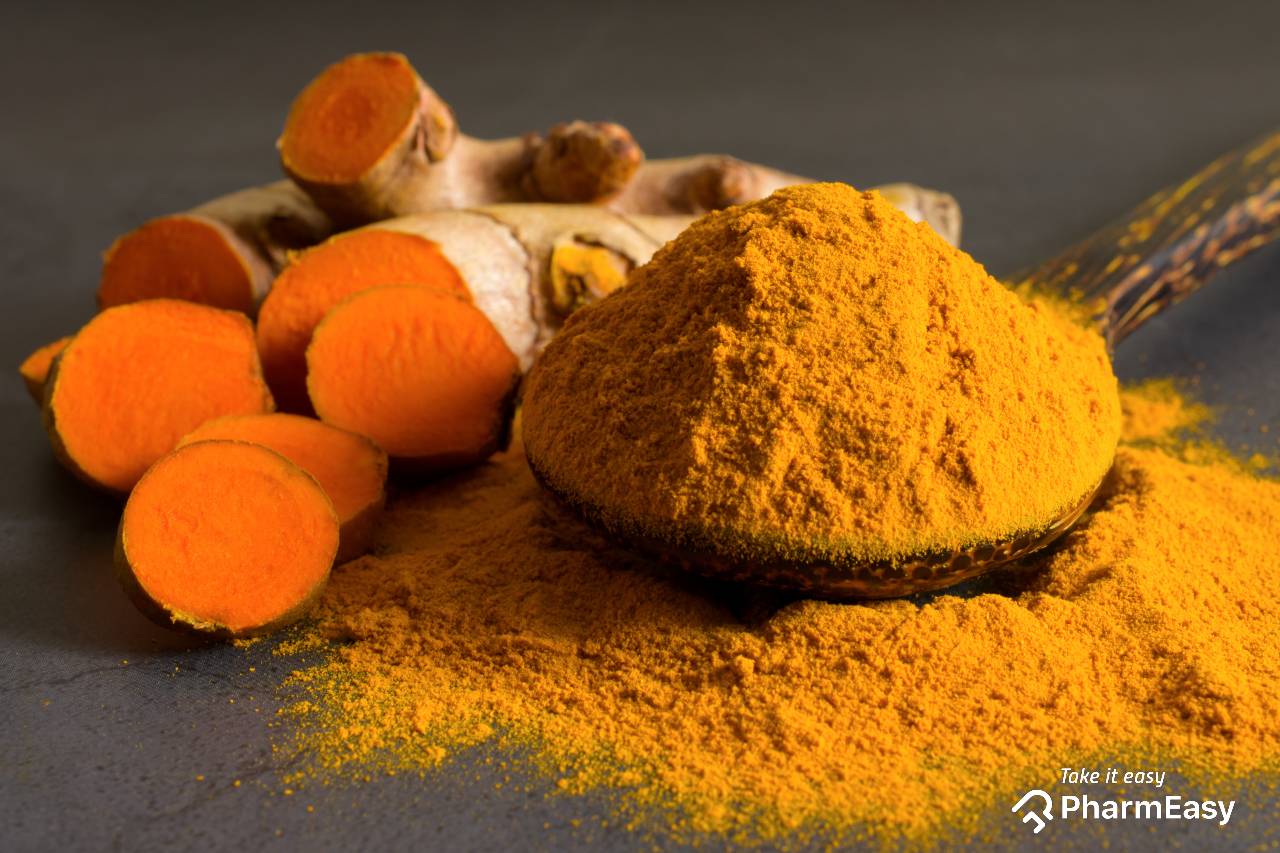
Sources of Turmeric
Turmeric is widely cultivated in India, followed by other countries like Thailand, Indonesia, China, and Africa. There are two main varieties of commercially grown turmeric: “Alleppey” and “Madras” in India. In the United States, “Alleppey-turmeric” is imported as a spice and food colorant.
Other Names for Turmeric
- In Sanskrit, it is known as Ameshta, Bhadra, hridayavilasini, jwarantika and suvarnavarna.
- In Hindi, it is known as Haldi.
- In Marathi, it is known as Halad.
- In English, it is known as Indian saffron.
- In Kannada, it is known as Arisina and Arishina.
- In Tamil, it is known as Manjal.
- In Telugu, it is known as Pasupu and Haridra.
- In Malayalam, it is known as Manjal.
Did you know?
- Turmeric may increase the risk of bleeding in patients taking warfarin and antiplatelet drugs. source: fdc.nal.usda.gov
- Turmeric has been used as a galactogogue in India and Indonesia, but no scientific data support this use. source: fdc.nal.usda.gov
- Turmeric is used in Thailand as part of a topical herbal mixture to shorten the time to full lactation and for breast engorgement. source: fdc.nal.usda.gov
Important chemical constituents of Turmeric
Several important constituents are present in the turmeric rhizomes, and scientists are still trying to reveal their importance in human health. The two major constituents which have a huge demand and medicinal importance are non-volatiles and volatile components.
- Non-volatile components: Curcuminoid (it majorly imparts the coloring properties), Curcumin (three different types curcumin III (0.3%), curcumin II (6%), and curcumin I (94%)).
- Volatile components: Zingiberene (25%), sesquiterpines (53%), cineol (1%), a-phellandrene (1%), borneol (0.5%) and sabinene (0.6%).
Traditional Uses of Turmeric
- Turmeric is used in households for treating cough, anorexia, dysentery, abdominal pain, respiratory ailments, and dental disorders.
- It is also used for treating gastrointestinal disorders like liver disease, ulcers, and flatulence.
- Macerated rhizomes of turmeric and lime are used to treat inflammation caused by injury and relieve muscle pain.
- Freshly prepared turmeric paste is used in a perineal laceration to facilitate wound healing after the delivery.
- The turmeric paste is an excellent antiseptic, and that is why it is applied to the umbilical core of newly born babies.
- It is known that turmeric paste is applied to the skin during eye infections, burns, and bites.
- The combination of turmeric and neem is very effective in treating chickenpox, smallpox, and measles (rubella).
Therapeutic Uses of Turmeric
- Turmeric is used to prepare anticancer formulations.
- The intake of turmeric and its products can enhance cortisone production in adrenal glands, reducing inflammation by reducing the histamine level.
- Turmeric helps to detoxify the body and improve liver health.
- Turmeric plays an important role in reducing platelet aggregation, which improves blood circulation and protects against atherosclerosis.
Over the years, I have observed that curcumin, a component of turmeric, can have immune-stimulating properties. It may help strengthen your body’s immune response, that is important for defending against illnesses and maintaining good overall health.
Dr. Siddharth Gupta, B.A.M.S, M.D (Ayu)
Turmeric and Its Relevance to Skin Health
- Turmeric has a strong anti-bacterial property, and therefore it can help in any bacterial infection on the skin.
- Several cream or lotion-based formulations are prepared using turmeric, which showed great potential to reduce the hairs on the face and acne infections and improve skin naturality.
- Tetrahydrocurcumin is a component that is an off-white powder, and it is an excellent cutaneous antioxidant used in Topical formulations.
- Turmeric contains Curcuminoids, and it has strong anti-inflammatory and antioxidant properties. Due to this, it is used as a cosmeceutical.
- The gel form of Curcumin is used in treating photodamaged skin (solar elastoses, solar lentigines, and actinic poikiloderma).
Turmeric and Its Anti-Cancer Properties
- There is enough scientific evidence available on turmeric, which shows its antimutagenic properties.
- Turmeric can help prevent new cancers caused due to the chemotherapy used in treating the cancer situation.
- The research has shown that turmeric can inhibit the uncontrolled spread (metastasis) of skin cancer by arresting the carcinogens produced through the chewing of tobacco and smoking.
In my experience, I’ve seen that incorporating curcumin can be beneficial during High-Intensity Interval Training (HIIT). They may help deal with inflammation, and boost your immune function and assist in recovery. Curcumin may play a role in providing therapeutic benefits to support your overall well-being during HIIT workouts.
Dr. Rajeev Singh, BAMS
Other Health Conditions and Relevance of Turmeric
- Turmeric is used in treating joint pain-related conditions; it helps in reducing inflammation.
- The continuous intake of turmeric in the diet can reduce tendonitis, bursitis, and arthritis.
- The mixture of turmeric and alum powder proportionally is used in treating otorrhoea.
Health Benefits of Turmeric
- Turmeric decoction prepared from fresh rhizomes is used in an internal application to treat a snake bite, vomiting during pregnancy, and leprosy.
- Turmeric paste can help in creating the essential blood clot when applied to the injury.
- Turmeric formulation on the site of injury plays the role of sanitizer. It also helps in tissue formation, wound contraction, and triggers the skin healing process.
- Some scientific data shows the interaction between white adipose tissue and curcumin; this helps suppress unnecessary fat in the body.
- Turmeric can trigger the gallbladder for bile production, improving the digestion process and fat metabolism.
- Due to the strong antioxidant, antimicrobial and anti-inflammatory properties of turmeric components, it is an ideal constituent for making skin base formulations.
- There insufficient scientific data available that showed that turmeric has importance in treating Alzheimer’s disease.
Recommended Dosage of Turmeric
The ayurvedic dosage of Turmeric varies according to its variants. Different forms of Turmeric products
- Churna: 1/4 tsp of churna or turmeric powder with lukewarm milk or water. — 2 times
- Juice: Crush fresh rhizomes to prepare; take 3-4 tsp turmeric juice mixed with lukewarm milk or water to make one glass. — 2 times
- Tea: Boil 1/4 tsp churna or turmeric powder with one glass of water for 5–10 minutes; can add lemon juice and honey for flavor. — 2 times
- Turmeric Water: Boil 5 g churna or turmeric powder with 2 cloves and 2 dried guava leaves in 200 g water. — 2 times
- Turmeric Paste: Mix 1 tsp churna or turmeric powder with ½ tsp table salt and mustard oil. — 2 times
Preparation of Healthy Turmeric Milk
- Clean the fresh turmeric rhizomes with running water and peel them.
- Grate it into the smaller size pieces.
- Take milk and allow it to heat.
- Then add the black pepper powder and grated turmeric into the hot milk, allow it to stand for 2-3 min.
- Strain the whole mixture.
- For taste, add the honey and mix it well.
- It should be taken during the lukewarm condition.
Some diseased conditions recommended dosage of Turmeric
- Osteoarthritis: Turmeric extract 500 mg — 2 times/day for 3 months
- High Cholesterol: Turmeric extract 700 mg — 2 times/day for 3 months
- Itchy Skin: Turmeric extract 500 mg — 3 times/day for 2 months
Precautions While Using Turmeric
- Pregnant women should consult the doctors before taking any turmeric supplements since it is unclear whether their intake impacts pregnancy and breastfeeding.
- In patients suffering, Haemophilia should consult the doctors since turmeric components have shown the interaction with blood components, which probably can slow down blood clotting.
- The intake of turmeric in diabetic conditions can cause a very sharp drop in blood sugar levels.
Frequently Asked Questions (FAQs)
Yes, it is beneficial in Alzheimer’s situation. Turmeric components help in the reduction of the amyloid plaques in Alzheimer’s patient brain. The curcumin also reduces the inflammation in brain cells due to its strong anti-inflammatory property. The combined effect of curcumin is very effective in curing Alzheimer’s disease.
No, Turmeric is an essential spice that is daily taken into our diet, and it has lots of health benefits. But it is also important to know that turmeric synergistically with some anticoagulant drugs such as warfarin, clopidogrel, and aspirin can increase the risk of bleeding, so it is important to consult the doctor/ dietician in this situation.
Yes, Depression is a situation in which the higher inflammation of nerve cells decreases serotonin levels in the brain. Curcumin from Turmeric, due to its strong anti-inflammatory property, can induce depression.
Yes, the formulations prepared from turmeric’s volatile components have helped remove sputum, which further relieves cough. It is also helpful in preventing asthma.
The turmeric milk recipe is straightforward, and turmeric milk indeed has beneficial for diabetes condition. It enhances the production of insulin by the liver and helps to regulate blood glucose levels. This is possible since the curcumin of Turmeric has powerful anti-inflammatory and antioxidant properties.
Disclaimer: The information provided here is for educational/awareness purposes only and is not intended to be a substitute for medical treatment by a healthcare professional and should not be relied upon to diagnose or treat any medical condition. The reader should consult a registered medical practitioner to determine the appropriateness of the information and before consuming any medication. PharmEasy does not provide any guarantee or warranty (express or implied) regarding the accuracy, adequacy, completeness, legality, reliability or usefulness of the information; and disclaims any liability arising thereof.
Links and product recommendations in the information provided here are advertisements of third-party products available on the website. PharmEasy does not make any representation on the accuracy or suitability of such products/services. Advertisements do not influence the editorial decisions or content. The information in this blog is subject to change without notice. The authors and administrators reserve the right to modify, add, or remove content without notification. It is your responsibility to review this disclaimer regularly for any changes.



 By
By 


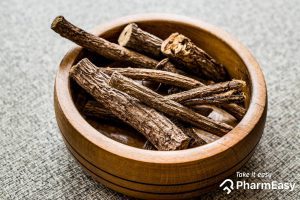
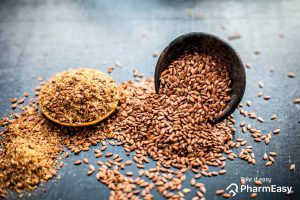


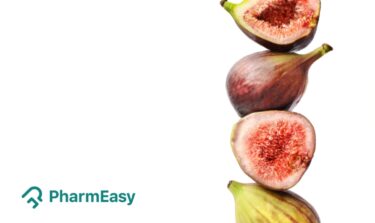

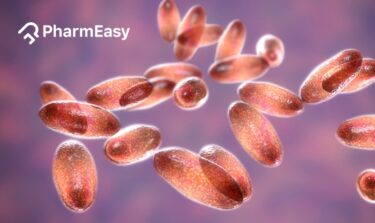


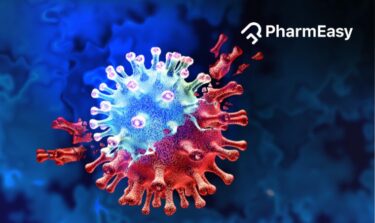

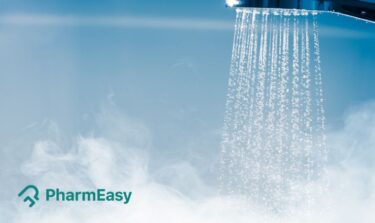

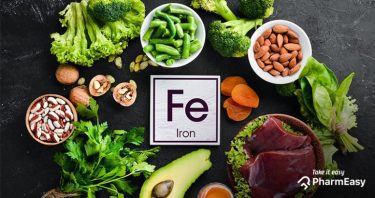





Comments